Switzerland has a worldwide rep for quality and precision. Hence, many of its export successes are either of high quality or of utmost precision (think wristwatches). In addition, there are some popular vices like absinthe or LSD which also have their roots in Switzerland.
While they are proud of these export wonders, some might argue that the Swiss prefer keeping the best traditions to themselves. Here are eight unique traditions you will only find in Switzerland:
Alpabzug is the descent of cows from the alps at the end of summer.
Even after years of living in Switzerland, I have yet to witness a proper Alpabzug. The alpine descent of cows is one of the most iconic traditions in Switzerland. It is being celebrated in various regions and marks the end of summer.
During four months on a mountain pasture, Swiss cows have the chance to graze on the freshest herbs. When it is time to descend to the valley, farmers will skillfully decorate their cows with flowers and bells before they parade home. The experience for spectators is audiovisually stunning: The farmers are wearing their most precious costumes, the cow bells chime in a calming rhythm, and there might even be the occasional alphorn tune.
Bundesfeier is the German name for Swiss National Day.
I hope that you have already marked August 1 as the Swiss National Day. This holiday has been around since 1891 when it was instituted in honor of Switzerland's legendary founding in 1291. (Please note that Wilhelm Tell and the infamous apple shot is a legend and is not based on "real" history.)
The celebrations on August 1 are traditionally on a local level. Many towns will set up a festival tent with music and food during the day, and many entrepreneurial farmers prepare farm brunches. Once it gets dark, there might be fireworks or a traditional Höhenfeuer - a gigantic bonfire that can be seen from far away.
Chalandamarz is a living tradition for the youngsters.
The first day of March is called Chalanda in the local Romansh dialect. According to the Roman calendar, March 1 used to be the New Year, so newly elected officials would take office on this day. But today, Chalandamarz is mostly a holiday for the children of Graubünden.
By parading around town and ringing their bells early in the morning, the youngsters' aim is to drive away evil spirits and collect sweets from the residents. This living tradition comes in various local particularities and is a "bucket list" event for those who live in Switzerland.
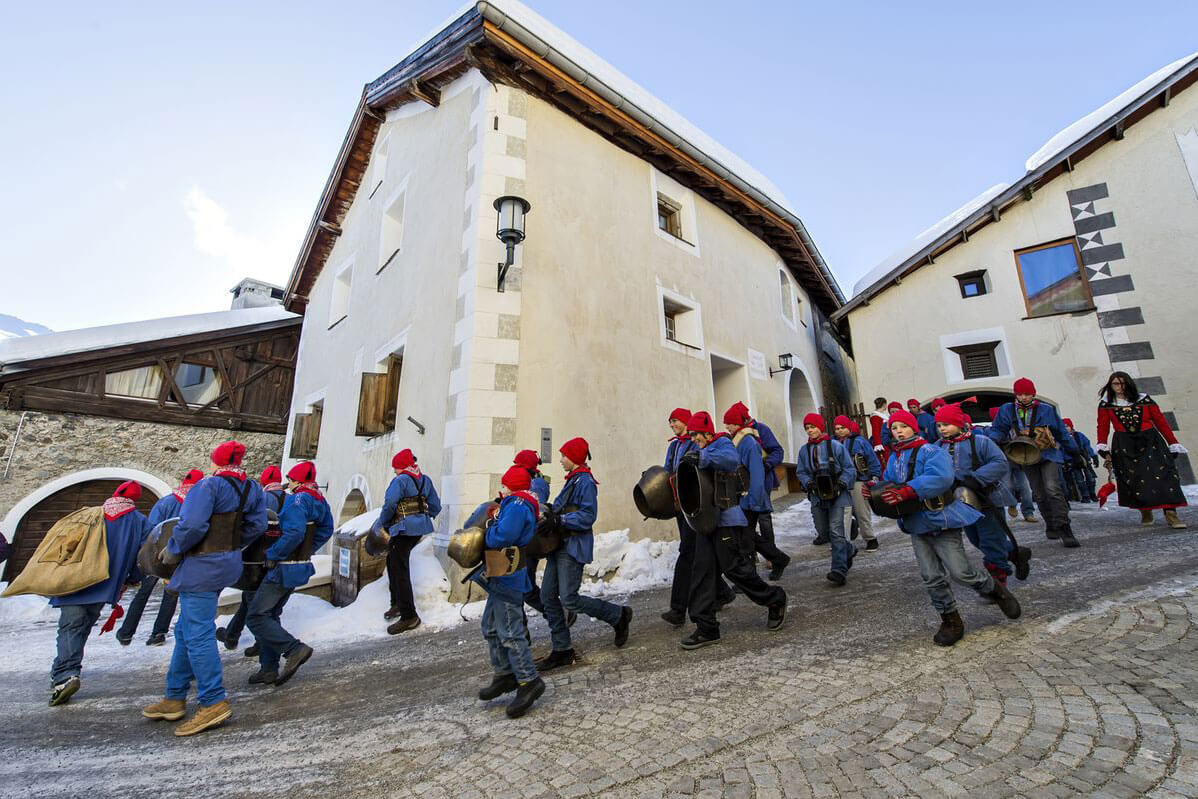
Landsgemeinde is the most direct form of direct democracy.
In Switzerland, democracy is not just a buzzword. While every citizen has the right to vote, two cantons still practice democracy like a century ago. In Glarus and Appenzell Innerrhoden, the Landsgemeinde is an annual event in May where townspeople gather at a central plaza.
Without a roof over their heads, several thousand voters will cast their votes in full sight of everyone else. There is literally no privacy because acceptance or rejection of an issue is done by raising of a hand or voter ID card. Common issues might be tax brackets, new laws or policies.
Something special about the Landsgemeinde in Glarus is the fact that any natural person can ask the town for a common vote on an issue. Normally, citizens are required to collect 50'000 signatures to support a referendum, or 100'000 signatures for a national initiative.
Here is an impression of the Landsgemeinde in Glarus:
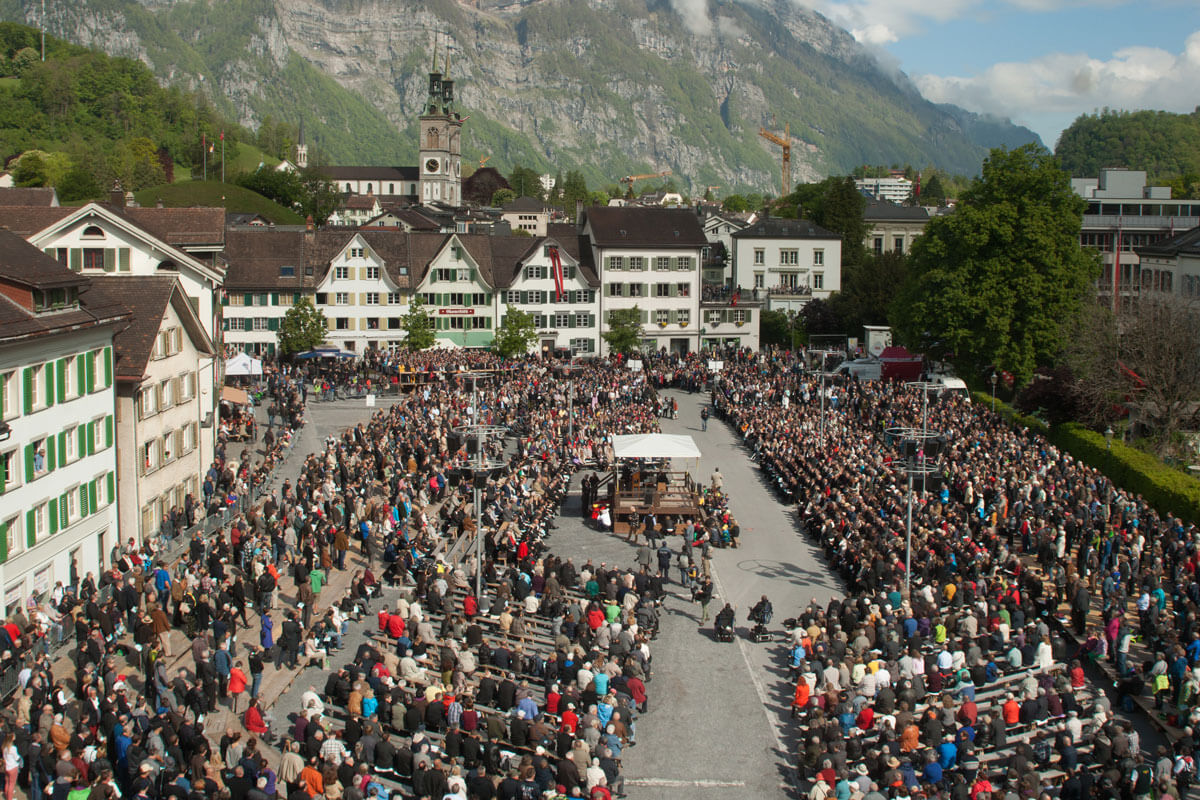
Rütlischiessen is an annual target shooting event at Lake Uri.
To commemorate the legendary founding of the Swiss Confederation in 1291, the rifle society of Lucerne carries out the annual Rütlischiessen. Every November on the Wednesday before St. Martin's Day, a boat will leave Lucerne's port for the Rütli, a slopy pasture along Lake Uri.
There, more than 1000 target shooters will compete throughout the morning. The aim is to get the most points among 48 targets which are mounted on a rock face. After a lunch featuring specialties from cantons that are not part of the original three, the Swiss National hymn is performed and the winners are announced.
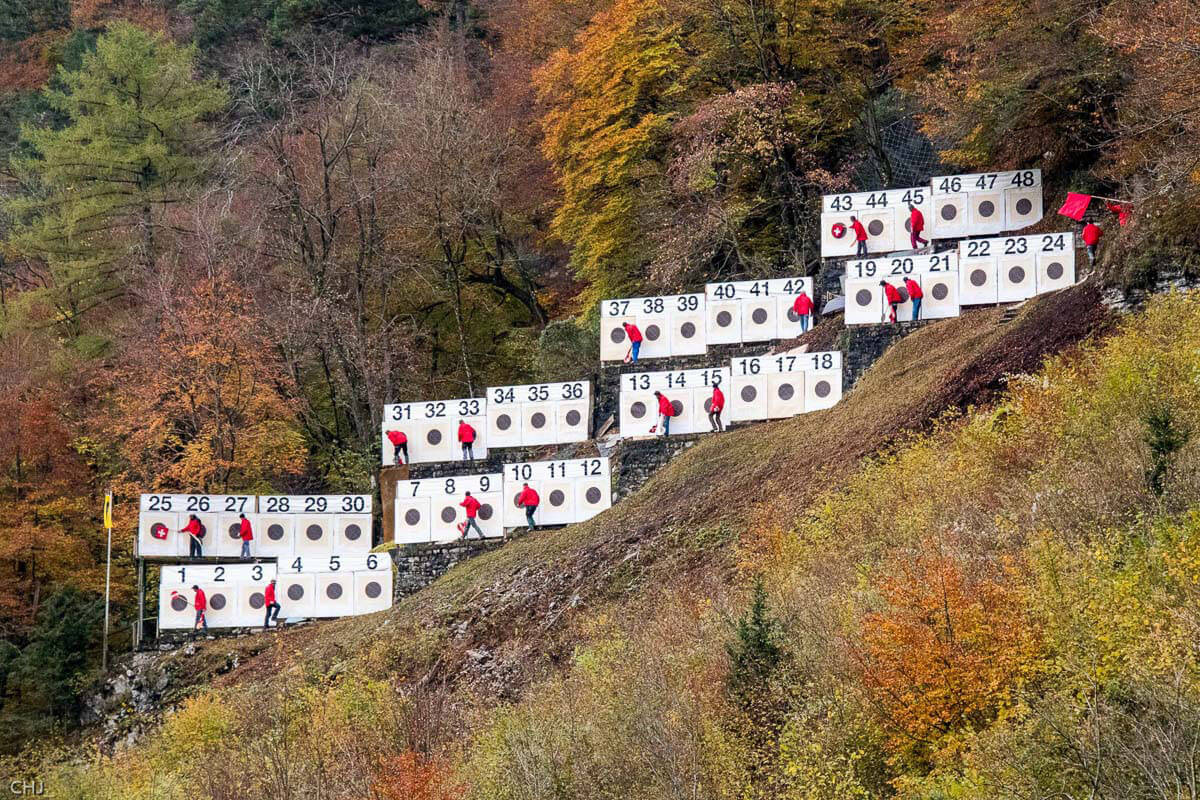
Sechseläuten is Zürich's spring festival with a boom.
This is a quintessential tradition in Zürich that takes place every third Sunday and Monday of April. Sechseläuten quite which literally means the "six o'clock ringing of the bells", and the terms goes way back to the 19th century when guildsmen were supposed to work until they heard the church bells at 6 PM.
Today, Sechseläuten is a parade for Zürich's various guild members, as well as for Zürich's children. The event culminates with the burning of a giant snowman. The less time it takes for the symbol to catch on fire and explode, the nicer the coming summer will be.
The Unspunnen stone wants to be tossed.
The tossing of the Unspunnen stone is the highlight of Interlaken's Unspunnen Festival. This tradition dates back to 1808 as a means of accustoming the rural residents of Bern with their new rulers in the city of Bern. It was a historic power shift from the countryside back to the city, and maybe it is no coincidence that the ensuing folk festival involves a power shift as well.
Quite literally, the contestants have to toss the 83.5 kg Unspunnen stone for as far as possible. The same stone has been in use since 1905, and the current record toss by Markus Maire is at 4.11 m.
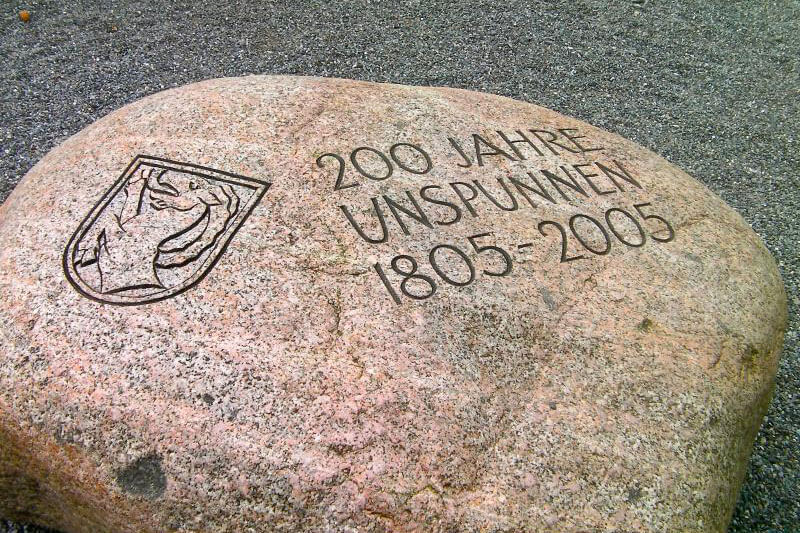
And Pfingstblüttlern is a strange custom where young men sneak up on unsuspecting women. (Did we mention they are dressed as bushes?)
In the village of Ettingen, a truly bizarre custom has taken shape about 40 years ago. How to explain Pfingstblüttlern? On a specific day in June, young men covered in brushwood will chase random women down the street just to grab them and dip them into a fountain. Supposedly, this practice is based on a fertility ritual to help women getting pregnant.
Look closely, because what appear to be trees are actually guys dressed as trees:
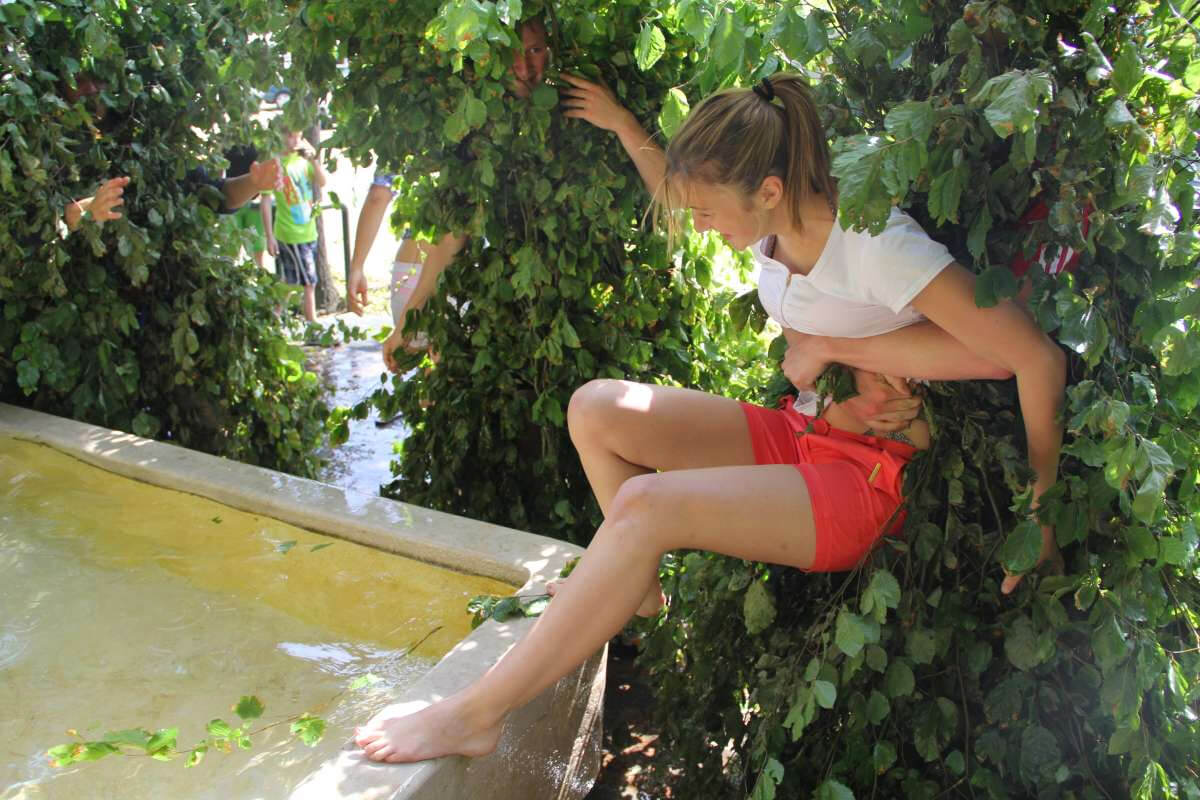

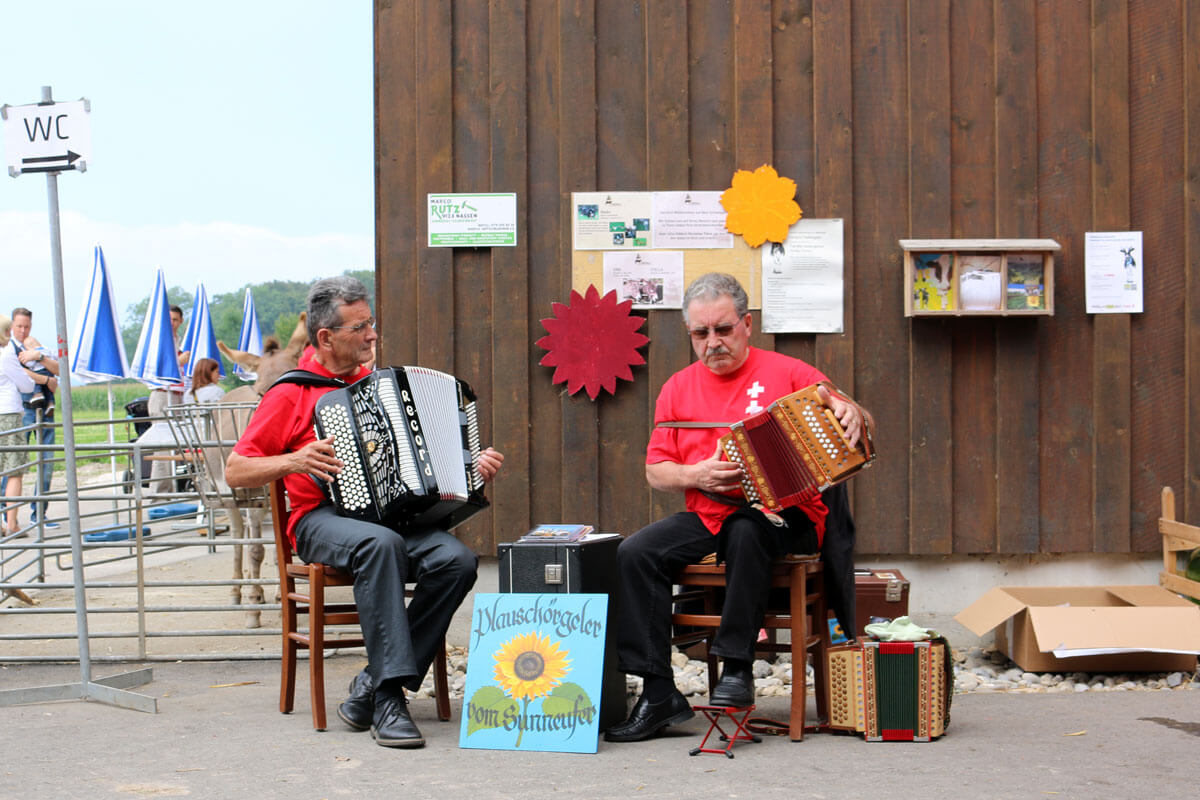
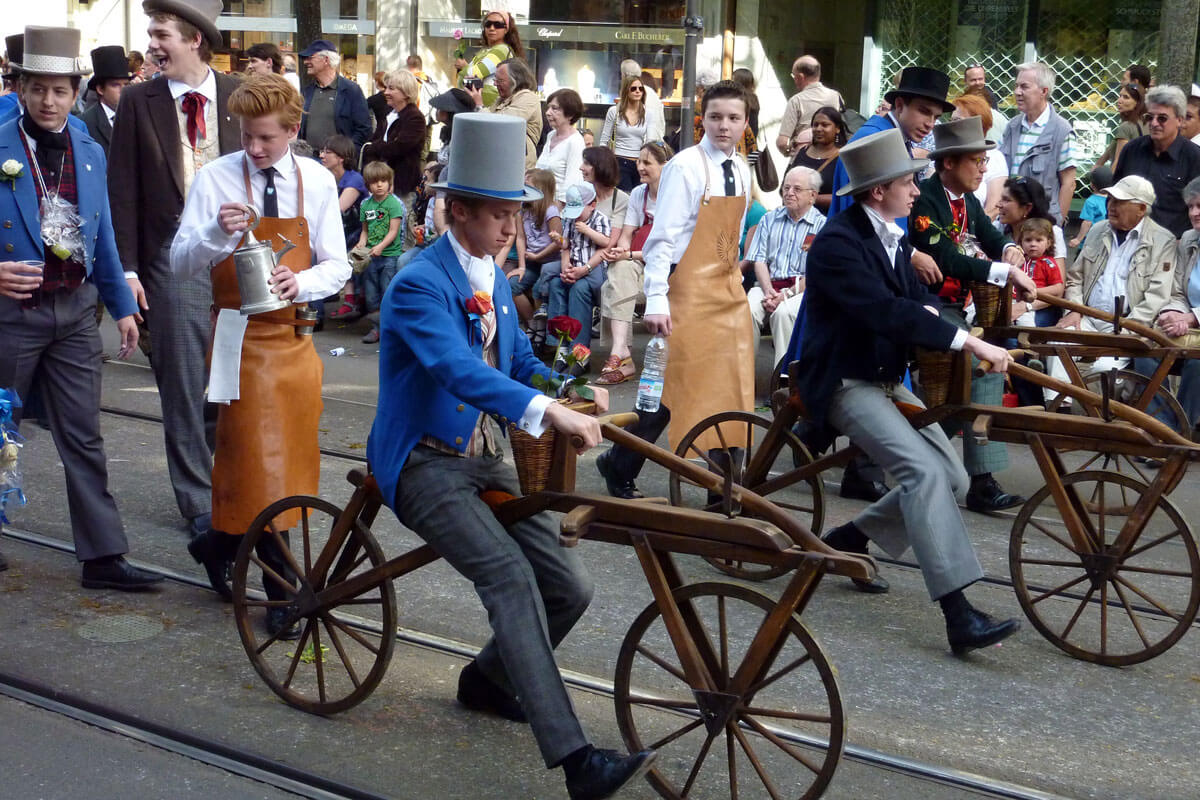
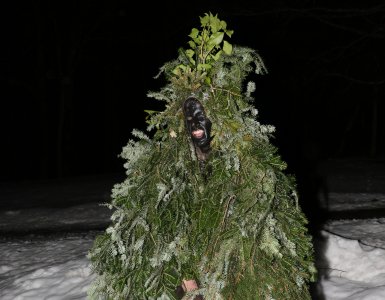
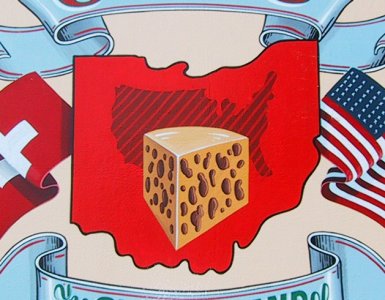
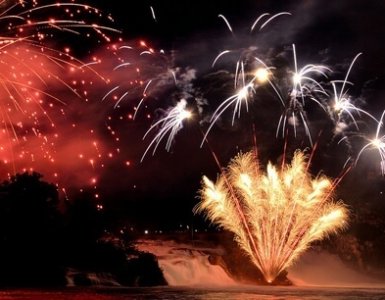

Add comment